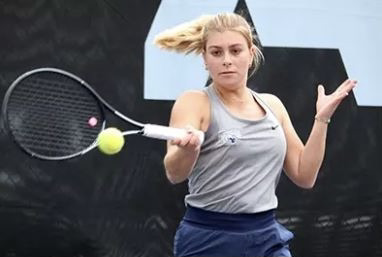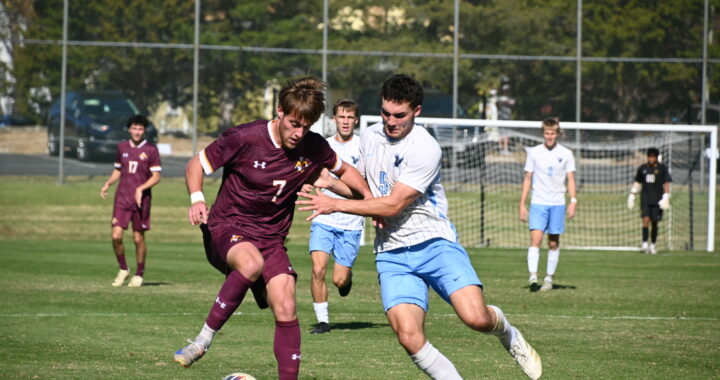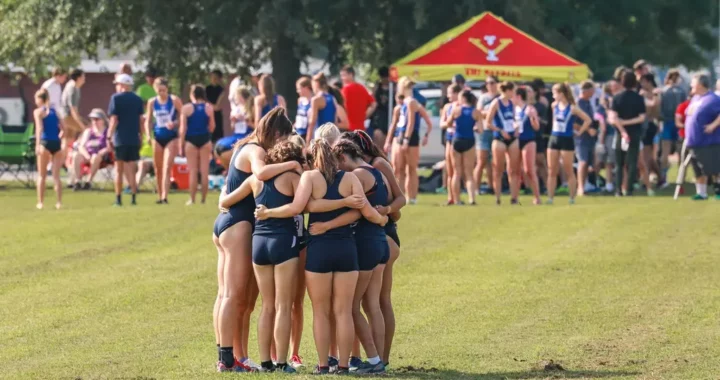A blast from athletics’ past
3 min readBy REGINA WEISS
For some students, sports are not the most important aspect of University of Mary Washington. But that is OK. What is important, however, is the deeply rooted history behind the school’s athletic past, which is lengthier than one may consider.
In “University of Mary Washington: A Centennial History 1908-2008,” Professor of history William B. Crawley Jr. covers UMW’s past in overwhelming depth.
Not missing in his exploration of UMW’s history is UMW athletics.
Crawley begins his outline of the UMW Athletic Program in the 1980s, when he says, “general culture began to place greater emphasis on issues of wellness.”
Downtown Fredericksburg’s Bodyworks Gym drew students for workouts, Crawley explains, and Goolrick Hall was home to a weight room, although it was “dank and uninviting.”
With fit students come student athletes, which were abundant.
Intramural sports spanned the school, with options such as basketball, soccer, football, tennis, softball and volleyball, all drawing 600-800 students per semester in total in 2007, according to Crawley.
Club sports were yet another option between intramural and varsity sports, Crawley said.
According to Crawley, “the oldest continuously active club sport” at UMW was the equestrian club, founded in 1934. Its name changed in 1939 to the Hoof Prints Club and was still active in 2008.
The synchronized swimming club is another an oldie, named the Terrapins and founded in the same year as the equestrians. They used to host “water pageants” spanning two days. Swimmers sported “costumes, instrumental music, and illumination,” Crawley said.
UMW’s cheerleading club was fairly popular in the 1970s with the emergence of varsity teams. There were even male “lifters” on the team.
The Mary Washington College Dance Team formed in 1988 and choreographed their routines to modern dance and hip-hop, according to Crawley. Cheerleaders and dancers could be seen at halftime performances at basketball games and homecoming soccer games.
Currently popular club on campus, Ultimate Frisbee, began in the 1970s and expanded with more organization in the 1990s.
Arguably the most popular current club sport at UMW, rugby was just as big when it started in the 1980s, and especially when the MWC Rugby Club formed in 1984.
The appeal, Crawley says in his book, was the “tough-guy image” the sport gave off.
“Sometimes referred to as “maul ball,” the sport promoted itself with bumper stickers that proclaimed, ‘It takes leather balls to play rugby,’” Crawley said.
The team eventually joined the 25 team Virginia Rugby Union, which had teams along the East coast and scored coverage from both the Washington Post and the Free Lance-Star, according to Crawley.
The team defeated schools much larger, including Duke (who they also defeated recently on Sept. 21) and North Carolina State.
The women’s rugby team, coached by Professor of Geology, Grant Woodwell (still teaching at UMW) and then Bill Lucas, found success as well.
The women’s team finished fourth nationally in their division in 1994
The ladies had some expressions of their own as well.
“Like the men’s team, the women ruggers developed a mystique of toughness, sporting T-shirts bearing suggestive sayings such as (on the front) ‘Nice Cleats’ and (on the back) ‘Wanna Ruck?,’” according to Crawley.
It seems that the only thing that has changed for rugby is the year in which they are playing. They are still rolling over other larger teams and earning win after win. It is impressive.
Crawley goes on to describe developments in the athletic programs at UMW, including the strength of leaders such as Athletic Director Ed Hegman, hired in 1976.
New varsity sports were added in addition to the already existing 16 sports in 1985, including women’s soccer and horseback riding in 1986, men’s lacrosse in 1987, baseball and softball in 1988, and men’s and women’s rowing in 1988, according to Crawley.
UMW sports are thriving in 2013, as shown by the wins added to the statistics each week. Athletes, whether participating in intramural sports, club sports or varsity sports, should take pride in the steps they have climbed to be where they are now and celebrate their sport’s history.


